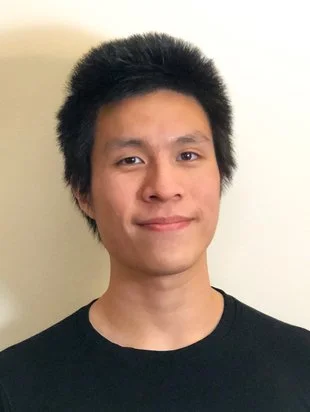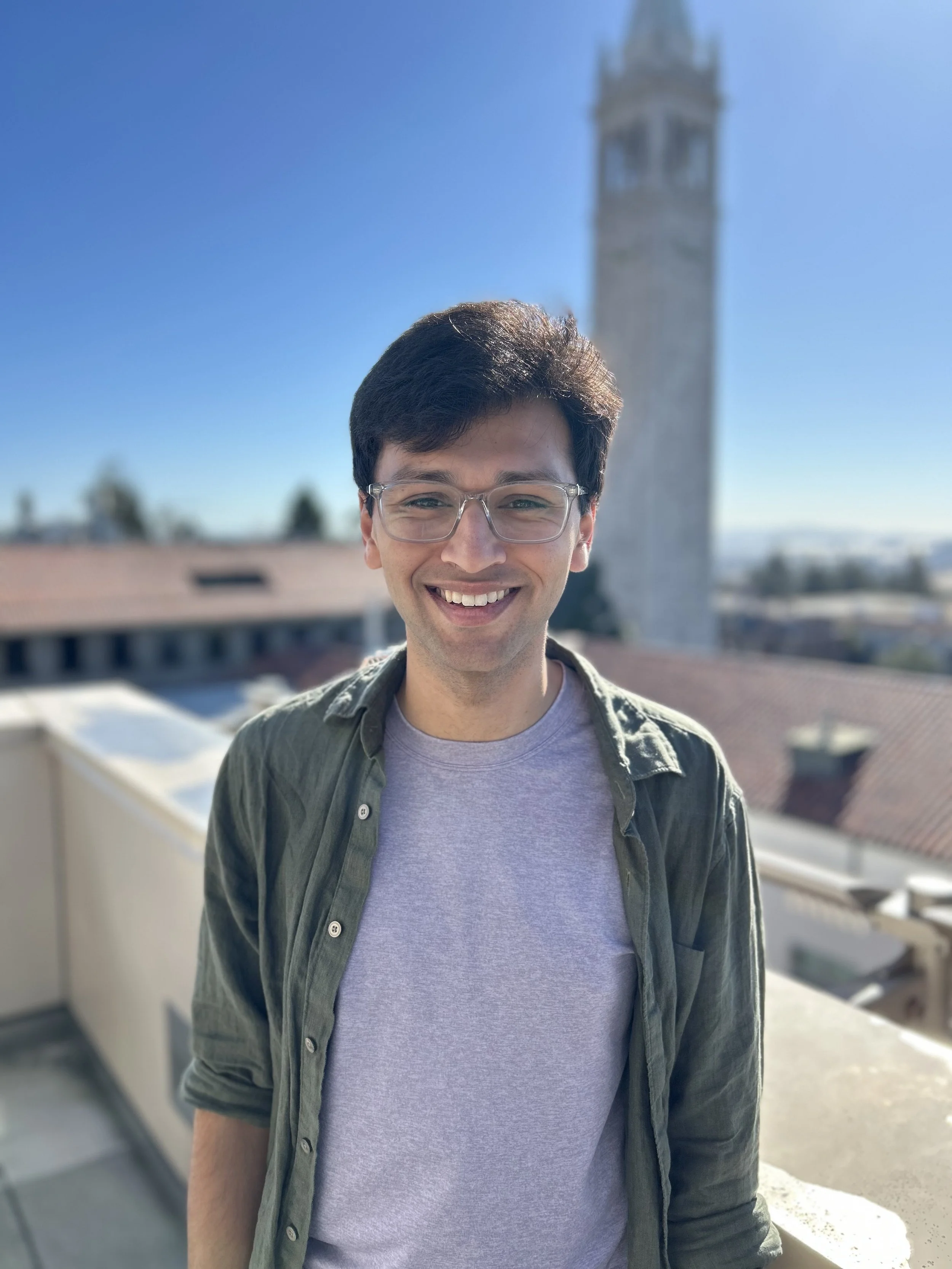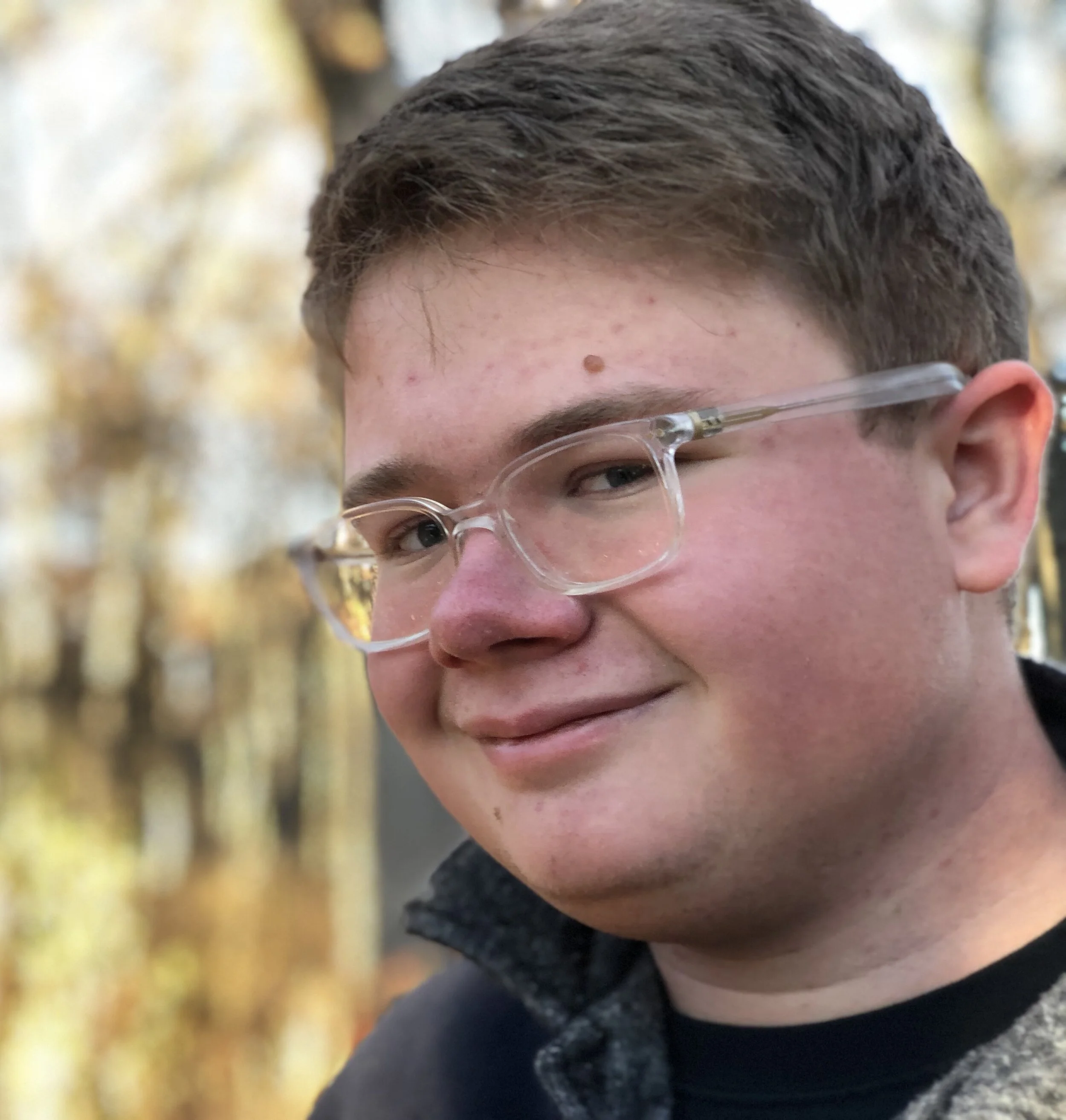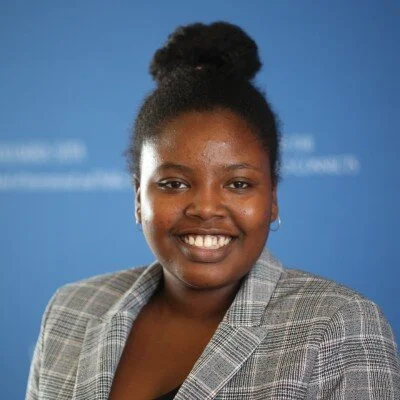current students & postdocs
Ian brunton
Caltech graduate student (planetary science) 2023-
Ian is fascinated by the ways astrophysical processes shape the Solar System, from the disruptive influence of nearby supernovae on Earth’s biosphere to the intricate dynamics of planetary satellites. His current research focuses on developing a theory for the origins of Jupiter’s inner moons, showing how Amalthea and Thebe could have migrated to their present locations through resonant interactions and aerodynamic drag within Jupiter’s primordial disk. In two recent studies (arXiv:2507.17464, arXiv:2508.10109), he demonstrates that Amalthea’s present orbit is naturally explained by inward resonant transport with Io, while Thebe’s orbital history constrains its density to be at least 1 g/cm³, offering new insight into the coupled formation and evolution of Jupiter’s interior satellite system.
Teng Ee (Tony) YAP
Caltech graduate student (planetary science) 2022-
Tony obtained his B.A. in Astrogeophysics from Colgate University before joining Caltech in 2022. Passionate about unraveling the early history of the Solar System, his research sits at the intersection of isotope cosmochemistry and planetary astrophysics. He has published on nucleosynthetic isotope anomalies and on the coupled evolution of dust and gas in protoplanetary disks (arXiv:2408.00159, arXiv:2412.07211), where he developed a self-consistent framework that accounts for turbulent viscosity and magnetically driven winds. Tony is now extending his work to the origins of the orbital architecture of the Jovian satellite system, with the aim of offering new perspectives on the formation and evolution of planets and their satellites.
Matthew Belyakov
Caltech graduate student (planetary science) 2021 -
Matthew is interested in all things Solar System, including detection, spectroscopy, as well as population studies of outer Solar System objects, and how these can inform theories on the evolution of planetary systems. His current project revolves around expanding the theoretical model for the perihelion boundary of stability for Kuiper Belt Objects. Recently, he published a paper “The Perihelion Boundary of Stability in the Kuiper Belt”, and he is now working on extending this framework to broader dynamical contexts within the trans-Neptunian region.
Valeria Kachmar
Caltech graduate student (planetary science) 2022-
Valeria is broadly interested in the physics of planetary formation and evolution and the (re)cycle of planet-building materials – how do we go from dust to planets of diverse compositions and structures? Which environments are favorable for planetary formation? Currently, she is working on the century-old problem of white dwarf pollution.
Yinuo han
Caltech Barr Fellow (planetary science) 2024 -
Yinuo’s current work aims to understand the formation and dynamical evolution of planetary systems through the study of debris disks. He explores how planets and small bodies could interact to shape disk structures based on high-resolution imaging from infrared to millimeter wavelengths. He has recently been working to understand the diversity of debris disk radial profiles in the ARKS ALMA program, the age dependence of debris disk substructures and their connection to protoplanetary disks, unbiased methods to deconvolve and model disk images, and the origin of azimuthal asymmetries in bet Pic and gam Oph.
Avni bansal
Caltech undergraduate student (physics) 2021 -
Avni is an undergraduate Physics major interested in gaining exposure to several areas of astrophysics and the planetary sciences. She has worked on projects related to Active Galactic Nuclei, variable stars, and young stellar systems, and is currently studying the effects of a potential stellar flyby on the architecture of the outer solar system.
Nick Choksi
Caltech 51 Pegasi b postdoc (planetary science/astrophysics) 2025 -
Nick is a theorist broadly interested in planet formation, celestial mechanics, and circumstellar accretion disks. Previous problems he has studied include the resonant dynamics of extrasolar super-Earths, chondrule formation, and runaway accretion onto gas giants. Nick received his PhD in astrophysics from UC Berkeley in 2025.
Former students & postdocs
Jon Zink
Caltech Hubble Fellow (astronomy/planetary science) 2021 - 2024
Jon used the population of planets around other stars to understand the physical processes that dictate planet formation. To accomplish this goal, he used the K2 mission data to extract a homogenous catalog of transiting planets. This wide survey of the ecliptic plane enables examination of the stellar host’s role in these formation mechanisms. He also worked on understanding the origins and fatality of the solar system, using numerical simulations to constrain the solar birth cluster and the mechanisms responsible for the system’s demise.
Gabriele pichierri
Caltech Barr Fellow (planetary science) 2023 - 2025
Gabriele was a postdoctoral researcher at Caltech, where he explored celestial mechanics, planet formation theory, and the dynamical evolution of the Solar System. His work spans hydrodynamic simulations of protoplanetary disks and analytic modeling of orbital interactions, with the goal of illuminating both early formation and long-term orbital stability in planetary systems. At Caltech, he also pursued advanced studies of the outer Solar System’s structure using numerical modeling techniques. In his recent paper (arXiv:2503.07146), he introduced a quantitative framework that classifies distant Kuiper Belt objects into stable, metastable, and unstable regimes by measuring their orbital diffusion, and demonstrated that (meta)stable objects tend to show stronger orbital clustering in perihelion and pole orientation compared to unstable ones.
Arnav Das
Caltech undergraduate student (physics) 2021 -
Arnav is broadly interested in orbital dynamics and chaos, as well as cosmology. He is currently exploring the long-term evolution and collective phenomena associated with self-gravitating particle disks. In a recent paper, he demonstrated how of Neptune scattering suppresses the onset of the inclination instability in the outer solar system.
Dennis Raush
Caltech undergraduate student (astrophysics) 2020 - 2024
Dennis is broadly interested in computational astrophysics, with past work spanning the effects of dark matter physics on Population III star formation and the role of supernovae in dispersing metals and shaping the first galaxies. More recently, he has investigated how the presence of a primordial solar companion could have influenced the early dynamical evolution of the Solar System. His undergraduate research culminated in a paper, which examines the dynamical consequences of a solar binary on planet formation.
MAX Goldberg
Caltech graduate student (astrophysics) 2019 - 2024
Max is broadly interested in the formation and evolution of extrasolar planetary systems. His current projects include the development of a theoretical description for the emergence of intra-system uniformity of exoplanets, as well as a study of long-term tidal evolution in nearly-resonant short-period systems. Max’s previous work considered how masses derived from Kepler transit timing variations could be improved with additional data from the TESS spacecraft. In a recent paper, Max identified the first pure 3-body resonance in the exoplanetary census. Max is now working to quantify the physical processes that shape the architectures of short-period sub-Jovian planets.
Max has recently accepted a postdoctoral position at Observatoire de la Cote d’Azur.
Juliette C. Becker
Caltech 51 Pegasi b postdoc (planetary science/astrophysics) 2019-2023
Juliette is a Heising-Seimons Foundation 51 Pegasi b Fellow at Caltech. Her interests range from dynamical characterization of extrasolar planets to discovery of minor bodies in the distant solar system. Together, we are working to understand how the birth environments of planetary systems affects their final dynamical architecture. In this vein, Juliette has recently proposed that Ultra-Short-Period planets are created during FU-Orionis type episodic accretion events. Her full list of publications is available here.
In August of ‘23, Juliette joined the faculty at University of Wisconsin, Madison.
Julie inglis
Caltech graduate student (planetary science) 2020 -
Julie’s research interests are using spectroscopy to characterize the atmospheres of giant planets in order to gain insight into their formation and evolution. Julie is also interested in the formation of satellites around giant planets and their properties.
Ryleigh Davis
Caltech graduate student (planetary science) 2020 -
Ryleigh has a wide range of research interests from telescopic observations and laboratory work on icy moons to the dynamics and evolution of planetary systems. Her current project focuses on examining tidal dissipation in super-Earths through modeling of planetary systems with significant non-Newtonian contributions to the apsidal precession.
Darryl Seligman
University of Chicago TC Chamberlin Postdoctoral Fellow (Geophysical Sciences)
Darryl received his Ph.D. from Yale University in 2020, where he worked with Gregory Laughlin and was a Gruber Fellow. He graduated from the University of Pennsylvania in 2015, with degrees in mathematics and physics. He primarily studies theoretical and computational planetary science and astrophysics. He is generally interested in fluid dynamics, nonlinear dynamics, plasma physics and neuroscience.
Kellen Rodriguez
Caltech undergraduate student (computer science) 2021 - 2022
Kellen is a senior undergraduate student majoring in Computer Science, as well as Business, Economics, and Management, with a minor in Astrophysics. To date, Kellen has done research in bioengineering where he worked on molecular programming and DNA nanotechnology. He is broadly interested in the formation and evolution of stars and planetary systems.
Marvin Morgan
University of Pennsylvania undergraduate student (physics) 2020 - 2021
As a 4th year undergraduate student at the University of Pennsylvania, Marvin worked on planetary dynamics of the early solar system in the context of the Nice Model. Using N-body simulations we showed how massive planetary embryos can form in the primordial disk of solar system planetesimals, thereby constraining the timing of the giant planet instability. He is broadly interested in solar system dynamics, exo-planetary dynamics, and time domain astronomy. Marvin is now pursuing a Ph.D. at University of Texas in Austin.
Marguerite Epstein-Martin
Caltech graduate student (planetary science) 2019-
Marguerite is interested in a broad spectrum of problems, ranging from the dynamical structure of the distant solar system to the interactions between young stars and the protoplanetary nebulae that encircle them. Her current project is aimed at quantifying the emergence of nonlinear resonances and chaos in externally perturbed circumstellar disks.
Walker Melton
Caltech undergraduate student (physics) 2015-2019
As an undergraduate researcher, Walker worked on understanding a correspondence between the secular inclination evolution of razor-thin self-gravitating particle disks and the Schrödinger equation, particularly in the case where long-range coupling in the disk could not be ignored (see published paper here). Walker is currently pursuing a PhD at Harvard studying celestial conformal field theories and the holographic structure of quantum gravity in asymptotically flat and de-Sitter spacetimes.
Tobias Koehne
Caltech graduate student (geophysics) 2018-2020
Tobias’ interests primarily lie in applying machine learning methods to seismology. However, during his first year as a graduate student, Tobias worked on delineating how highly inclined trans-Neptunian objects can get injected into the intra-Neptunian solar system, employing large-scale numerical simulations (see published paper here).
Shirui Peng
Caltech graduate student (environmental science and engineering) 2019-2020
Shirui’s interests range from seismic ocean thermometry to computational studies of planet formation. Shirui carried out a series of numerical experiments aimed at characterizing the velocity dispersion of planetary building blocks on a detailed level, with an eye towards teasing out aspects of oligarchic growth that can be attributed to simulation artifacts. Shirui’s work showed that even in simulations where self-gravity of a planetesimal swarm is completely suppressed, particle disk excitation can ensue through indirect terms of the governing Hamiltonian.
Elizabeth Bailey
Caltech graduate student (planetary science) 2014-2020
Elizabeth first began working with me in 2016. In the first paper she led, she demonstrated that the ~6 degree obliquity of the Sun could in principle have been induced by the gravitational influence of Planet Nine. In her follow-up work, she considered whether or not constraints on Planet Nine’s current on-sky location could be derived from the observational data. Unfortunately, her simulations demonstrated that chaos spoils the feasibility of a resonance-based hunt for Planet Nine. In the latter half of her Ph.D., Elizabeth worked on the now-classic problem of hot Jupiter formation. In this vein, her work has shown that within the framework of the in-situ formation model, the inner boundary of the mass vs. semi-major axis distribution of extrasolar planets should follow a power-law with index -2/7. Intriguingly, this theoretical relationship provides an excellent match to the observational data. In the summer of 2020, Elizabeth will be joining the Department of Astronomy & Astrophysics at UCSC (my alma mater; go slugs!) at as Heising-Seimons Foundation 51 Pegasi b Fellow.
Chris spalding
Caltech graduate student (planetary science) 2013-2018
While at Caltech, Chris led the development of a theory for the primordial excitation of spin-orbit misalignments in close-in planetary systems. Chris’s work has shown that the entire possible range of misalignments is attainable within the context of the purely gravitational disk-torquing mechanism, and that magnetic disk-star interactions may facilitate the observed correlation between stellar mass and spin-orbit misalignment. Chris has also investigated the connection between physics of disk-star coupling during the embedded phase of star formation and primordial coincidence between stellar and nebular angular momentum vectors, as well as the long-term fate of exo-moons and the origins of the Kepler dichotomy. In 2018, Chris was awarded the 51 Pegasi b Postdoctoral Fellowship by the Heising Simons Foundation, which he took to Yale University.
Maya Fuller
Caltech undergraduate student (astrophysics) 2017-2018
As an undergraduate research fellow, Maya carried out a numerical exploration of the implantation of short-period icy objects into the distant Kuiper belt by Neptune-facilitated outward scattering. Through direct N-body simulations, her work demonstrated that a considerable fraction of presently observed long-period Kuiper belt objects that exhibit rapid chaotic evolution may have been implanted into the distant domain of the solar system comparatively recently (i.e. within the last few hundreds of millions of years), and thus occupy orbits that are largely unaffected by the gravitational effects of putative Planet Nine.
Siteng Fan
Caltech graduate student (planetary science) 2015-2020
Taking advantage of the inherently parallel-computational nature of graphic processing units, Siteng carried out a large suite of self-consistent N-body simulations of the solar system's early dynamical evolution. Our simulations showed that the qualitative picture entailed by the Nice model is insensitive to collective effects of the planetesimal disk and that the coherent structure the distant Kuiper belt is unlikely to have a self-gravitational origin.
TALIA KHAIN
Caltech undergraduate WAVE fellow (planetary science) 2017
The goal of the research project that Tali undertook was to characterize the evolutionary dependence of the solar system’s trans-Neptunian minor body population on the solar system’s birth environment. In particular, it is widely accepted that the sun and its collection of planets formed in a massive cluster of stars, whose gravitational influence would have had a direct effect upon the distant orbits of icy debris that orbit the sun. To evaluate this effect from quantitative grounds, Tali carried out a series of large-scale computer simulations that elucidated how nascent perturbations upon the solar system from passing stars translate to the dynamical structure of the Kuiper belt we observe today. Tali is now pursuing a graduate degree at University of Chicago.
Natalia Storch
Caltech Burke postdoctoral fellow (astronomy) 2015-2018
Natalia was a Sherman Fairchild Postdoctoral Scholar in Theoretical Astrophysics at Caltech’s Burke Institute for Theoretical Physics. Natalia’s work focused on the long-term evolution of extrasolar planetary systems as well as the chaotic dynamics of stellar rotation (see also here). Together, we worked on characterizing a new mode of disk-driven planetary migration, as well as modeling the final stages of planet formation in the solar system. Natalia is now pursuing her life-long passion for write fantasy and sci-fi novels.
Abhijit Puranam
Caltech undergraduate student (physics) 2014-2017
As an undergraduate research fellow, Abhi was studying the long-term implications of rapid chaotic evolution of planetary systems, using the emblematic Gliese 876 planetary system as a case study. His analysis involved a combination of large-scale numerical N-body simulations and perturbative treatment of stochastic differential equations. Abhi now works as a data scientist in Silicon Valley.
Bhawna (mia) Motwani
Caltech graduate student (astrophysics) 2015-2017
While at Caltech, Bhawna studied the physics of planetary migration that occurs during the nebular stage of a planetary system’s lifetime. She employed large-scale magnetohydrodynamical simulations to model the early stages of the solar system’s evolution, with an eye towards constraining the amplitude of turbulent fluctuations within the solar system’s natal disk.
Stephen Markham
Caltech graduate student (planetary science) 2016
When Steve was a first-year graduate student, he and I worked on deriving model-independent constraints on the rates of radial migration of planets in protoplanetary disks. Unlike the conventional approach of modeling this process directly, Steve looked at indirect consequences of radial migration, to obtain observationally gounded estimates of this elusive process.
Katherine Deck
Caltech JCPA fellow (planetary science/astronomy) 2014-2016
Kat is an expert in the field of orbital dynamics and a postdoctoral fellow at the Joint Center for Planetary Astronomy at Caltech. She has worked on extracting subtle signatures of planet-planet interactions from transit timing variations data, and has instigated a description of how planetary systems evolve from their natal configurations to the architectures we observe today. Kat is now pursuing a new passion for data science outside of academia.
Gongjie Li
Harvard graduate student (astrophysics) 2012-2014
Gongjie has revisited the now classic problem of chaotic spin-axis evolution of a putative Moon-less Earth. In doing so, she formulated a purely analytical framework that allowed for an estimation of the characteristic timescale for dynamically-forced climate change and gave an intuitive interpretation of numerical results. Gongjie has extended her results with an aim of quantifying pre-late-heavy-bombardment evolution of the Earth’s obliquity. Gongjie is now an assistant professor of physics at Georgia Tech.
Juliette Becker
Caltech undergraduate student (astronomy) 2011-2013
Juliette and I worked on understanding the coupling between the planetary interior structure and the orbital state that arises for giant planets that reside in extreme proximity to their host stars. Using the HAT-P-13 system as an illustrative example, Juliette showed that in multi-planet systems that harbor a hot Jupiter, precise characterization of the system's orbital state can yield meaningful constraints on the transiting planet's interior structure, and such a calculation is applicable to an extensive range of orbital architectures. After completing her undergraduate degree, Juliette went on to pursue a Ph.D. in Astronomy at University of Michigan.
Hayden Betts
Polytechnic High School student, summer 2011
Along with Mike Brown and myself, Hayden worked on quantifying the possibility of the existence of an additional ice giant planet in the primordial Solar System. Our study included a large-scale numerical exploration of instability-driven dynamical evolution and showed that indeed, the Solar System may have harbored an additional massive object early on. Our findings were published here. Upon graduating from high school, Hayden enrolled into Harvard University as an undergraduate.



































